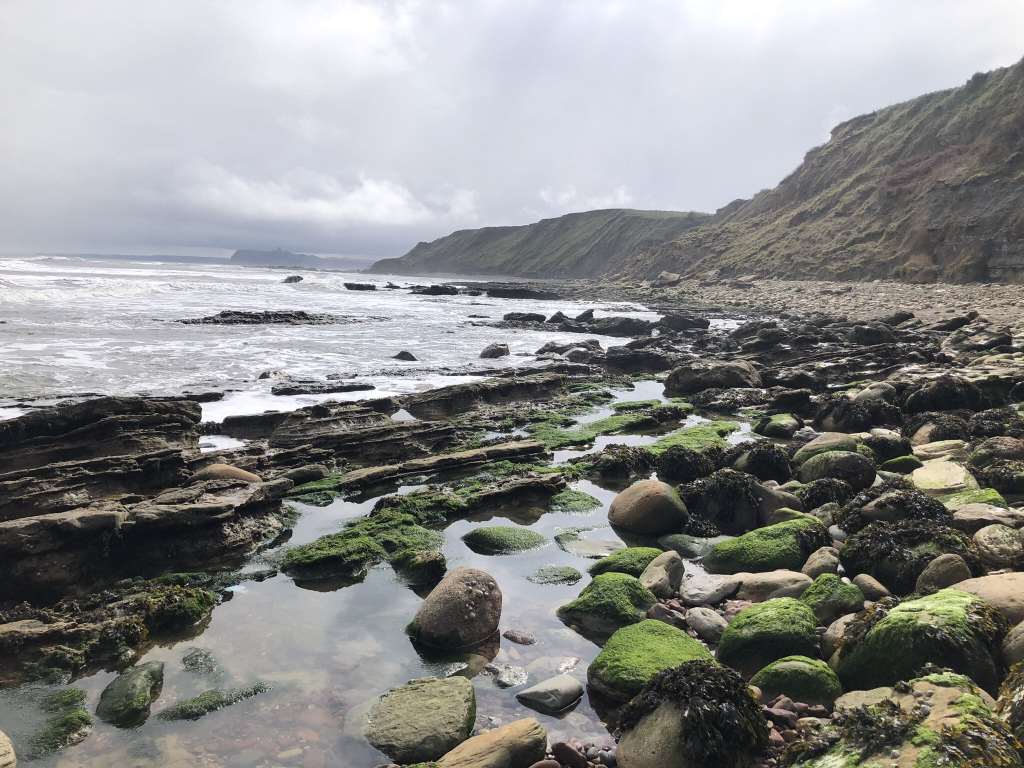The recent discovery of a dinosaur footprint highway in England has captured the attention of paleontologists and enthusiasts alike. Situated along the picturesque coastline of Yorkshire, this remarkable find dates back around 166 million years, during the Middle Jurassic period. The footprints, which were uncovered by a combination of natural erosion and scientific excavation, provide an unprecedented opportunity to study the behavior and movement patterns of dinosaurs that roamed the Earth during this era.
The significance of this discovery cannot be overstated. Paleontologists have long sought to understand how dinosaurs interacted with their environment and each other. The footprints, which vary in size and shape, suggest that multiple species traversed this area, likely in search of food, mates, or suitable habitats. The diversity of the tracks indicates a rich ecosystem, teeming with life, that existed in what is now the Yorkshire coastline.
Initial studies of the footprints have revealed a fascinating array of characteristics. Some of the tracks are large and deep, indicative of heavier dinosaurs, while others are smaller and more delicate, suggesting the presence of lighter species. Researchers believe that the variety of footprints may belong to both herbivorous and carnivorous dinosaurs, painting a vivid picture of a dynamic prehistoric landscape.
The discovery of this dinosaur highway also raises intriguing questions about the behavior of these ancient creatures. The patterns of the footprints suggest that some dinosaurs may have traveled in groups, possibly indicating social behavior or migratory patterns. This finding aligns with other evidence suggesting that certain dinosaur species exhibited complex social structures, much like some modern animals.
In addition to the footprints themselves, the surrounding geological context provides valuable information about the environment in which these dinosaurs lived. The sedimentary layers in which the footprints were found reveal details about the climate, vegetation, and geological processes of the time. This information helps scientists reconstruct the ancient landscapes and ecosystems, offering a more comprehensive understanding of the Middle Jurassic period.
The discovery is particularly timely, as it coincides with a growing interest in paleontology and the public’s fascination with dinosaurs. Museums and educational institutions are increasingly focusing on engaging the public with interactive exhibits and educational programs. The unveiling of this dinosaur highway is expected to spark further interest in the field, inspiring a new generation of paleontologists and enthusiasts.
Moreover, the site has been designated as a protected area to ensure that the footprints can be studied and preserved for future generations. Conservation efforts are essential, as natural erosion and human activities pose significant threats to such invaluable paleontological sites. By safeguarding this location, researchers can continue to study the footprints and the surrounding geology, unlocking more secrets of the past.
As scientists continue to analyze the footprints, they hope to gather more data that could shed light on the specific species that left their marks on this ancient highway. Advances in technology, such as 3D scanning and modeling, are enabling researchers to create detailed digital records of the footprints, allowing for further analysis and comparison with other fossil sites around the world.
In conclusion, the discovery of the dinosaur footprint highway in England is a significant advancement in the field of paleontology. It not only provides a unique glimpse into the lives of dinosaurs during the Middle Jurassic period but also opens up new avenues for research and public engagement. As scientists work to unravel the mysteries of this ancient highway, the findings will undoubtedly contribute to our understanding of the complex ecosystems that existed millions of years ago.


